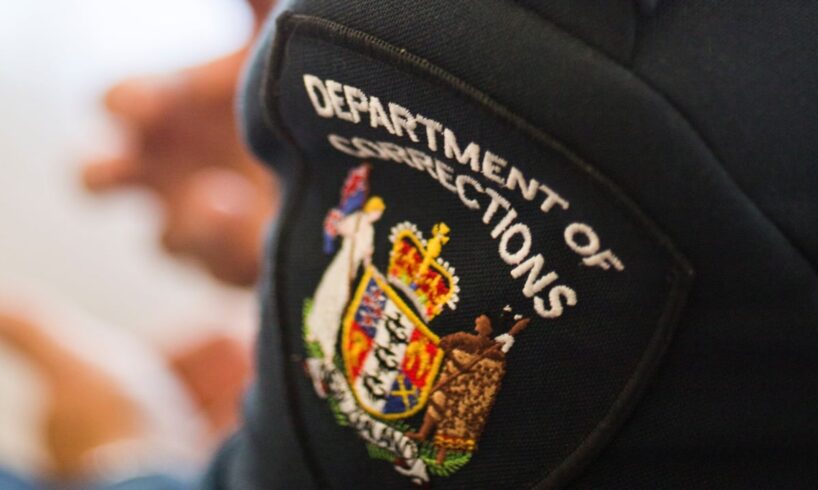
The number of prisoner-staff assaults in 2017-18 was 569, almost half the number last year (1080), while the number of prisoner-prisoner assaults was 28% higher.
“The crisis is already here,” Corrections Association NZ president Floyd du Plessis told Herald NOW on Monday.
“What we’re seeing at the moment is extremely high numbers of staff assaults. The tension within the prisons is rising, and the budget constraints are causing tension.”
Corrections says the prison population has become increasingly complex, with more gang members, remand prisoners, and those with a history of heavy methamphetamine use.
The overall increase is mainly because of non-serious assaults, including those resulting in no injuries.
The number of serious assaults bucked the trend, declining slightly in 2024-25 compared with the previous year for both prisoner-prisoner and prisoner-staff assaults. This was despite a growing prison population.
On a per-prisoner basis, the prisoner-prisoner assault rate has been higher for the past two years, while the prisoner-staff assault rate had been dropping until last year, when it increased 17%.
The per-prisoner serious assault rate has been up and down in recent years. Overall, it has been relatively steady for prisoner-staff assaults, but was still more than twice as high last year compared with in 2017-18.
The prisoner-prisoner serious assault rate fell last year, following two years of sharp rises.
Shrinking per-prisoner budget
The Herald revealed this week that the Budget 2025 funding to manage the growing prison population was already maxed out, several months ahead of schedule.
Budget 2025 provided $98.4 million a year in operational funding – mostly to hire more frontline staff – to cover a forecast 10,860 prisoners by June next year.
The prison population on September 30 was 10,860, nine months ahead of forecast.
There are currently 4666 full-time equivalent (FTE) Corrections officers, with 276.74 FTE vacancies. Corrections described the current situation as “sub-optimal”.
Mitchell told the Herald the direction of travel for frontline staffing numbers was improving, having been in a dire state a few years ago. The staff turnover rate had halved, while last year’s recruitment drive had been successful.
So far, Corrections has not asked for additional funding, so as the population continues to grow, the per-prisoner budget shrinks.
Corrections acting commissioner custodial services Kym Grierson said there could be several contributing factors to the rise in assaults in prisons, including:
the “significant” increase in prisoner numbers;“an increasingly challenging prisoner population”;an increasing proportion of prisoners who are on remand, gang-affiliated, or who have a history of excessive methamphetamine use, all of which increase their likelihood to be violent.
“The safety of our prisons is our absolute priority. We have zero tolerance for violence against prisoners or staff,” Grierson said in a statement.
Part of the increase could also be because of an increasing focus on encouraging staff to report any assault, regardless of seriousness, she said.
The number of assaults increased last year at Hawke’s Bay Regional Prison. Photo / Paul Taylor
Prisons where assaults are rising the most
The increase in the past year is because of both non-serious assaults and non-injury ones, with the steepest increases in Arohata, Hawke’s Bay Regional, and Whanganui Prisons.
For non-serious prisoner-staff assaults, the numbers in 2024-25 more than doubled compared with the previous year for Auckland Prison and Christchurch Men’s, and more than tripled for Hawke’s Bay Regional, Whanganui and Arohata.
Spring Hill bucked the trend, with a drop from 52 to 19 non-serious prisoner-staff assaults across the two most recent years.
The number of prisoner-staff assaults with no injury more than doubled in Whanganui and Auckland South Prisons compared with the previous year, and almost doubled in Rimutaka and Hawke’s Bay Regional.
For prisoner-prisoner assaults, the annual change in 2024-25 is almost all because of non-injury assaults.
These increased most markedly in Arohata, Auckland Region Women’s, Whanganui, Spring Hill, Mt Eden, Hawke’s Bay Regional, and Manawatu.
This comes as an increasing proportion of prisoners are double-bunked: 45% in June this year, up from 40% in June 2024, 34% in June 2023, and 27% in June 2022.
A double-bunked cell in the Auckland South Corrections Facility in Manukau. Photo / Dean Purcell
Everyone is screened for suitability for double-bunking, but this isn’t infallible; a prisoner was charged with the murder of a man with whom he shared a cell in Mt Eden Prison.
Du Plessis said double-bunking created “tension”.
“And especially at the moment where we’ve got a muster crisis, we’ve got prisoners being forced into [double-bunked] cells that don’t want to be there.
“The reality is the staff have to deal with it. We work in the most violent industry in the country. We face this violence. We face these assaults on a daily basis.”
Another issue was the vacant staffing shifts that weren’t being filled, he added.
“Prisons aren’t even trying to staff the vacant shifts, and it’s causing tension and violence.
“They’re accepting that they’re going to be short. They’re accepting the budget’s tight. And so they’re not filling those vacant shifts.”
A spokesperson for Corrections said vacant shifts “are not necessarily caused by understaffing, but more often due to unplanned absences such as sick leave and bereavement leave”.
“A prison may decide not to call in additional staff to work the shift if they deem the prison can operate safely and securely without this being filled.”
The Government is proposing a more severe punishment for an assault on a first responder, including a Corrections officer.
This is part of the National-NZ First coalition agreement.
The proposed changes include:
Assaulting a first responder or prison officer to incur a maximum sentence of three years’ imprisonment. This expands an existing provision on assaulting police to cover all first responders and prison officers.Assaulting a first responder or prison officer with intent to injure to incur a maximum sentence of five years’ imprisonment. This is a two-year increase in penalty from the standard offence.Injuring a first responder or prison officer with intent to injure to incur a maximum sentence of seven years’ imprisonment and will be added to Three Strikes 2.0. This is also a two-year increase in penalty from the standard offence.
A bill to enable these changes is yet to be introduced.
Derek Cheng is a senior journalist who started at the Herald in 2004. He has worked several stints in the press gallery team and is a former deputy political editor
Source
Visited 1 times, 1 visit(s) today






